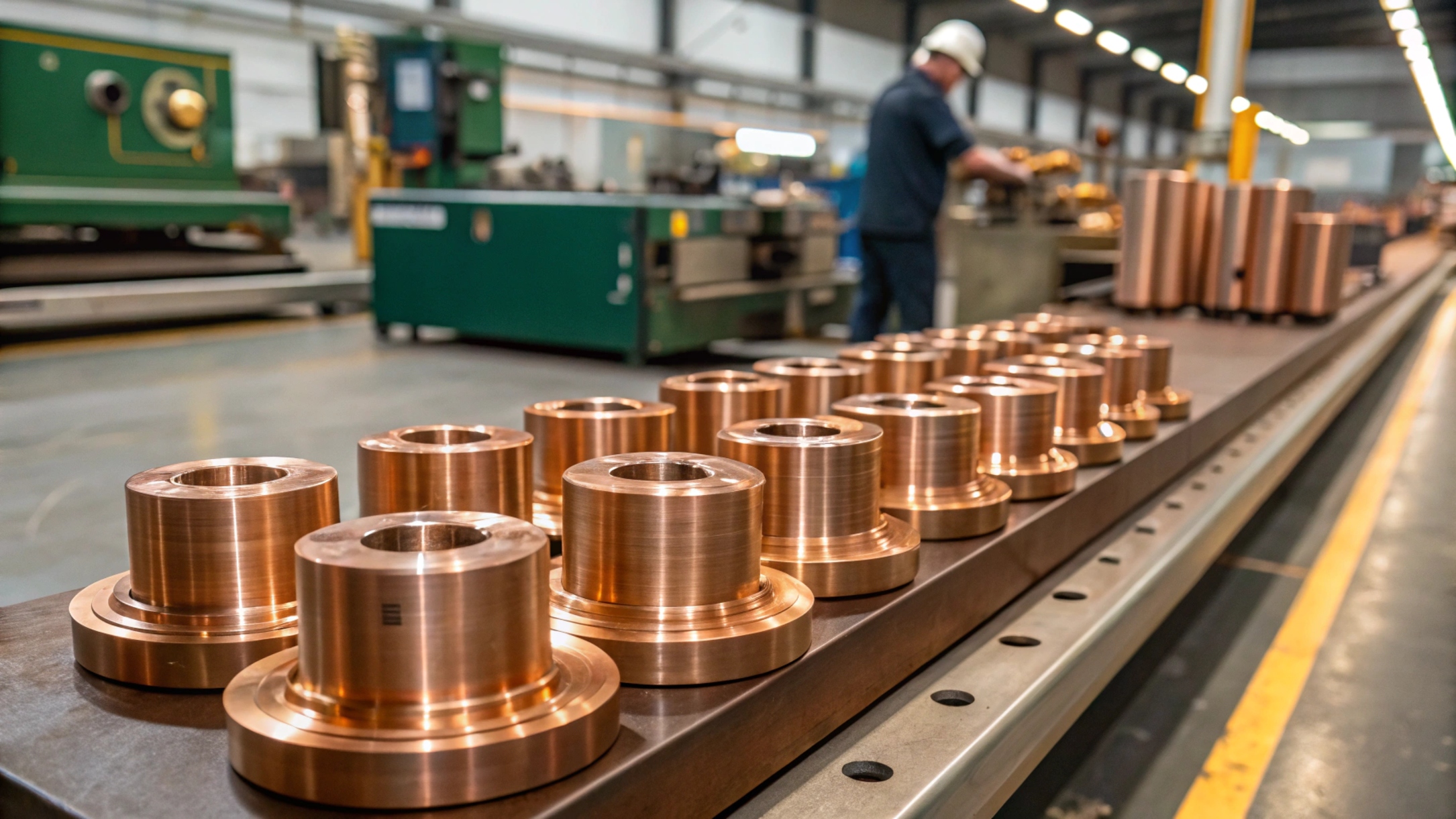
Struggling to machine copper with high accuracy? You’re not alone.
Copper is hard to machine due to its softness and stickiness, but offers excellent conductivity and strength.
Don’t stop here—let’s explore how to master copper CNC machining with confidence.
Why Choose Copper for CNC Machining?
Copper is sticky, soft, and tricky—but the performance is worth it.
Copper is chosen for CNC due to its high conductivity1, corrosion resistance2, and strength.
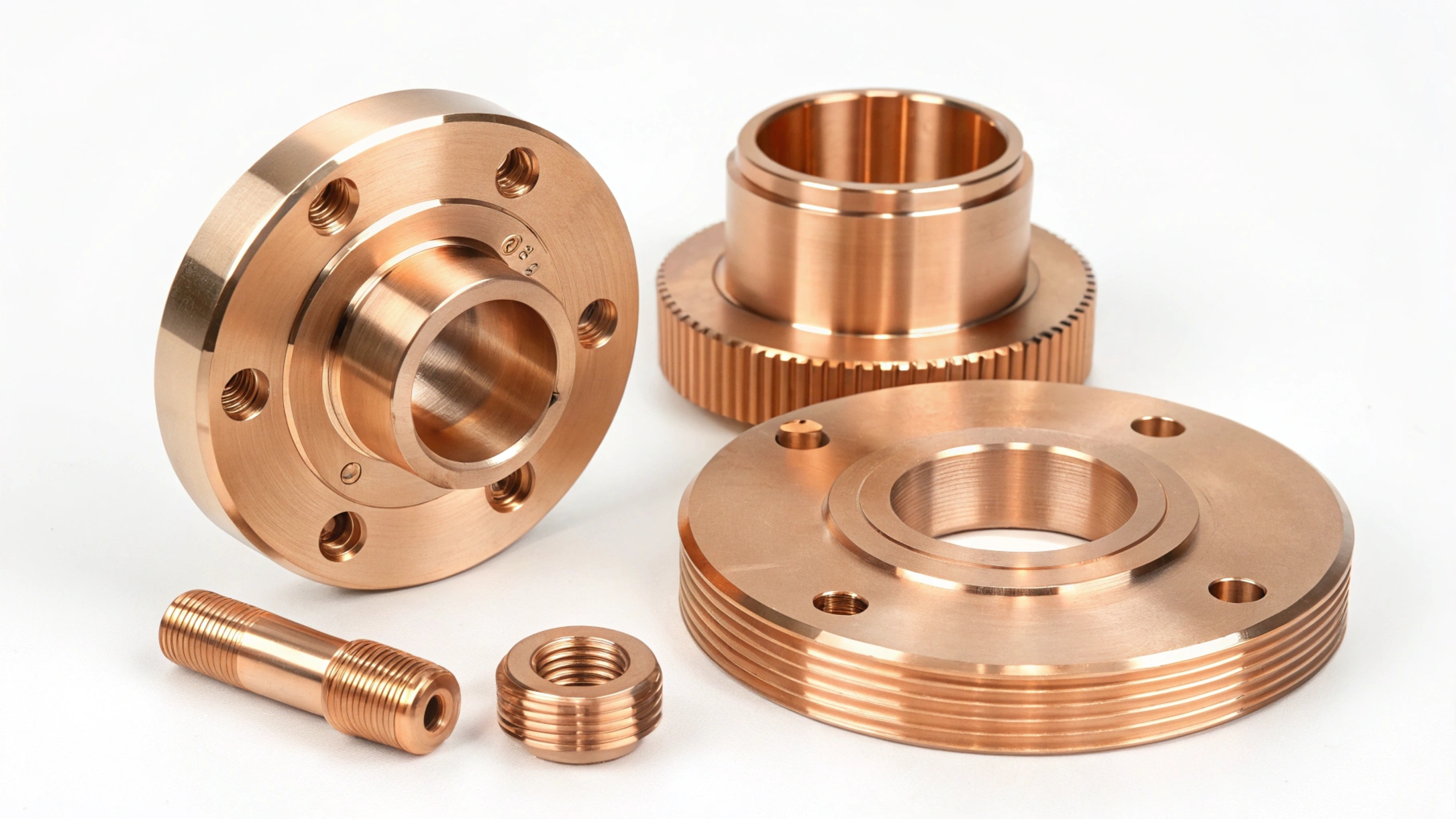
Dive-Deeper: Understanding the Value Behind CNC Machined Copper
Copper isn’t just another metal. It stands out in CNC machining for several critical reasons:
Exceptional Conductivity
Copper has the highest electrical and thermal conductivity of all engineering metals.
| Property | Value (Pure Copper) |
|---|---|
| Electrical Conductivity | ~100% IACS (International Annealed Copper Standard) |
| Thermal Conductivity | ~400 W/m·K |
This makes it irreplaceable in electronics, heat exchangers, and power transmission parts.
Natural Corrosion Resistance
Copper forms a stable patina when exposed to the environment. This thin layer protects the base metal from further corrosion, making copper a great choice for outdoor or marine parts.
Biostatic and Antimicrobial
In the medical industry, copper's antimicrobial properties3 reduce bacteria, making it ideal for hospital tools and lab parts.
Ideal for Complex Parts
With CNC machining, copper's softness allows us to cut intricate geometries that are harder to achieve in other tough materials like stainless steel or titanium.
Challenges of Machining Copper Components?
Frustrated by burrs and tool wear when cutting copper? That’s common.
Copper machining is challenging due to its ductility, heat retention, and work-hardening.
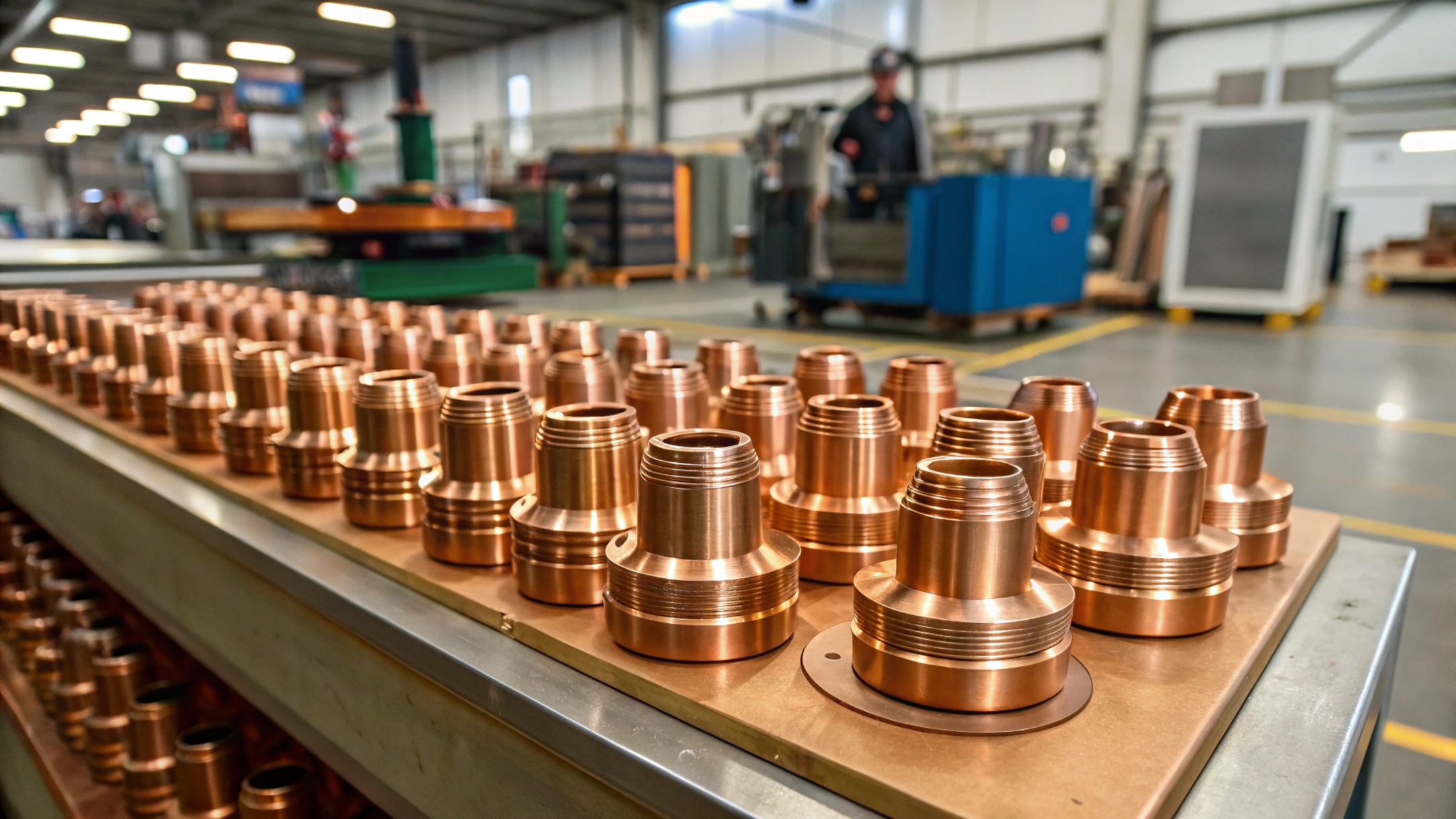
Dive-Deeper: Tackling Copper's Tough Behavior in Machining
Despite its advantages, copper is one of the more difficult materials to machine precisely. Here's why:
Low Hardness Leads to Smearing
Copper's softness causes smearing on the tool, which can affect surface finish and dimensional accuracy.
High Thermal Conductivity
Ironically, copper's high thermal conductivity works against us during CNC processes. Heat dissipates quickly through the workpiece, preventing localized softening and causing uneven chip formation.
Work Hardening
If tools are not sharp or cutting parameters4 are not optimized, copper tends to work harden. This means the surface gets tougher with each pass, increasing tool wear and creating inconsistent surfaces.
| Common Issue | Cause | Suggested Fix |
|---|---|---|
| Burr formation | Low rake angle tools | Use sharper, high rake cutters |
| Smearing | Poor chip removal | Improve coolant flow and chip ejection |
| Tool wear | High RPM or low feed | Reduce spindle speed, increase feed |
Best CNC Practices for Copper Machining?
Want to reduce burrs and improve precision in copper parts?
Use sharp tools, optimized feeds and speeds, and stable fixturing for best copper machining5 results.
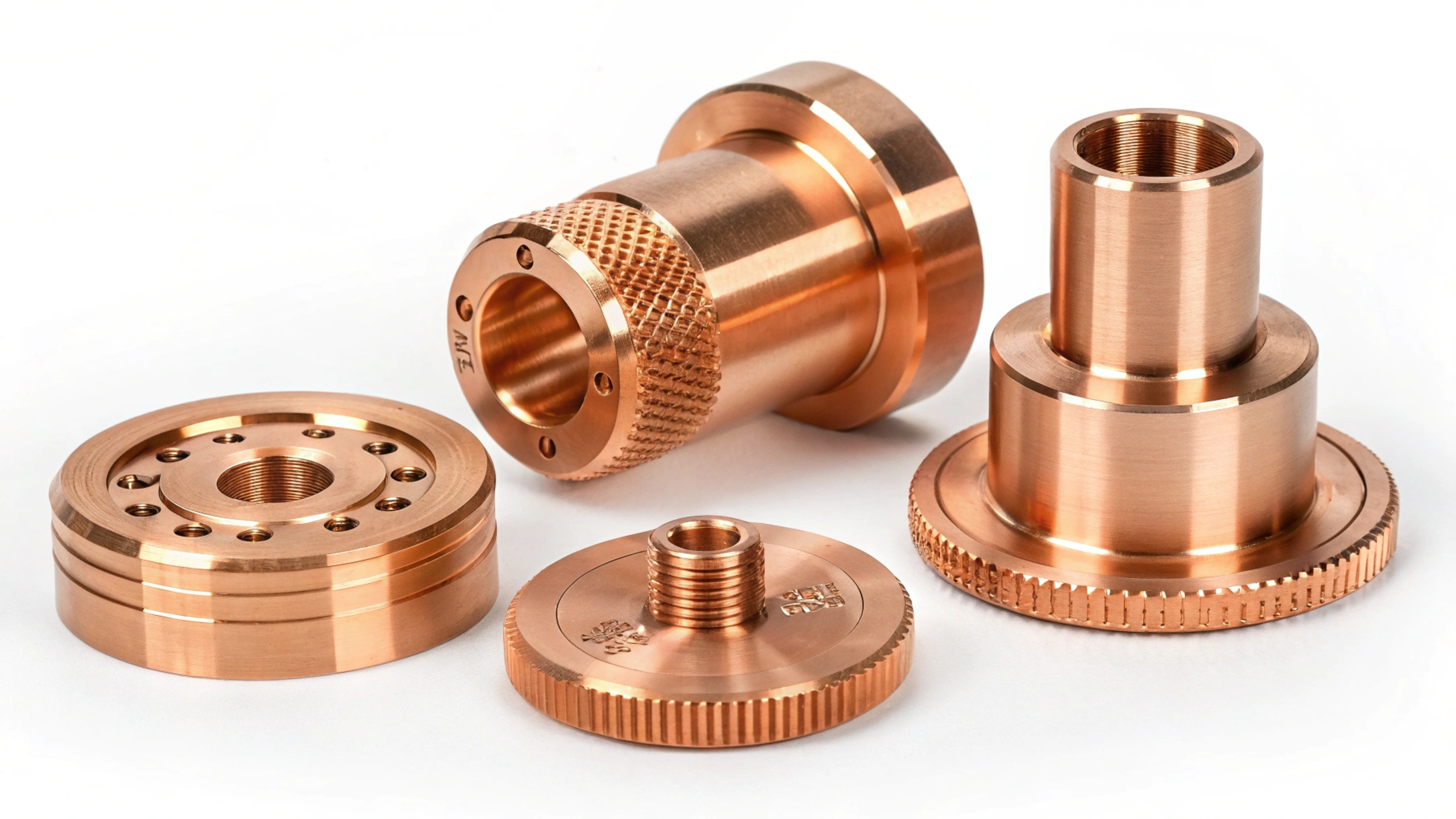
Dive-Deeper: Tried-and-True Methods to Improve Copper CNC Results
Over the years, we’ve built solid workflows to deal with copper’s quirks.
Tooling Tips
- Use carbide tools: They resist wear better than HSS when machining soft metals.
- Sharp cutting edges: Always start with a fresh tool. Dull edges increase smearing and burrs.
Cutting Parameters
Here’s a good starting point for common copper grades:
| Material | Spindle Speed (RPM) | Feed Rate (mm/min) | Depth of Cut (mm) |
|---|---|---|---|
| C110 | 1000–4000 | 200–500 | 0.25–0.5 |
| C145 | 1000–3500 | 150–450 | 0.2–0.4 |
Coolants and Chip Evacuation
- Use water-soluble coolant to minimize tool welding.
- Add high-pressure air or coolant flush to clear chips quickly.
Fixturing
Secure fixturing is key since copper is soft. Any vibration leads to dimensional errors.
Common Applications of CNC-Machined Copper?
Copper isn’t just for wires—it powers industries.
Copper CNC parts are used in electrical, thermal, medical, and aerospace systems.
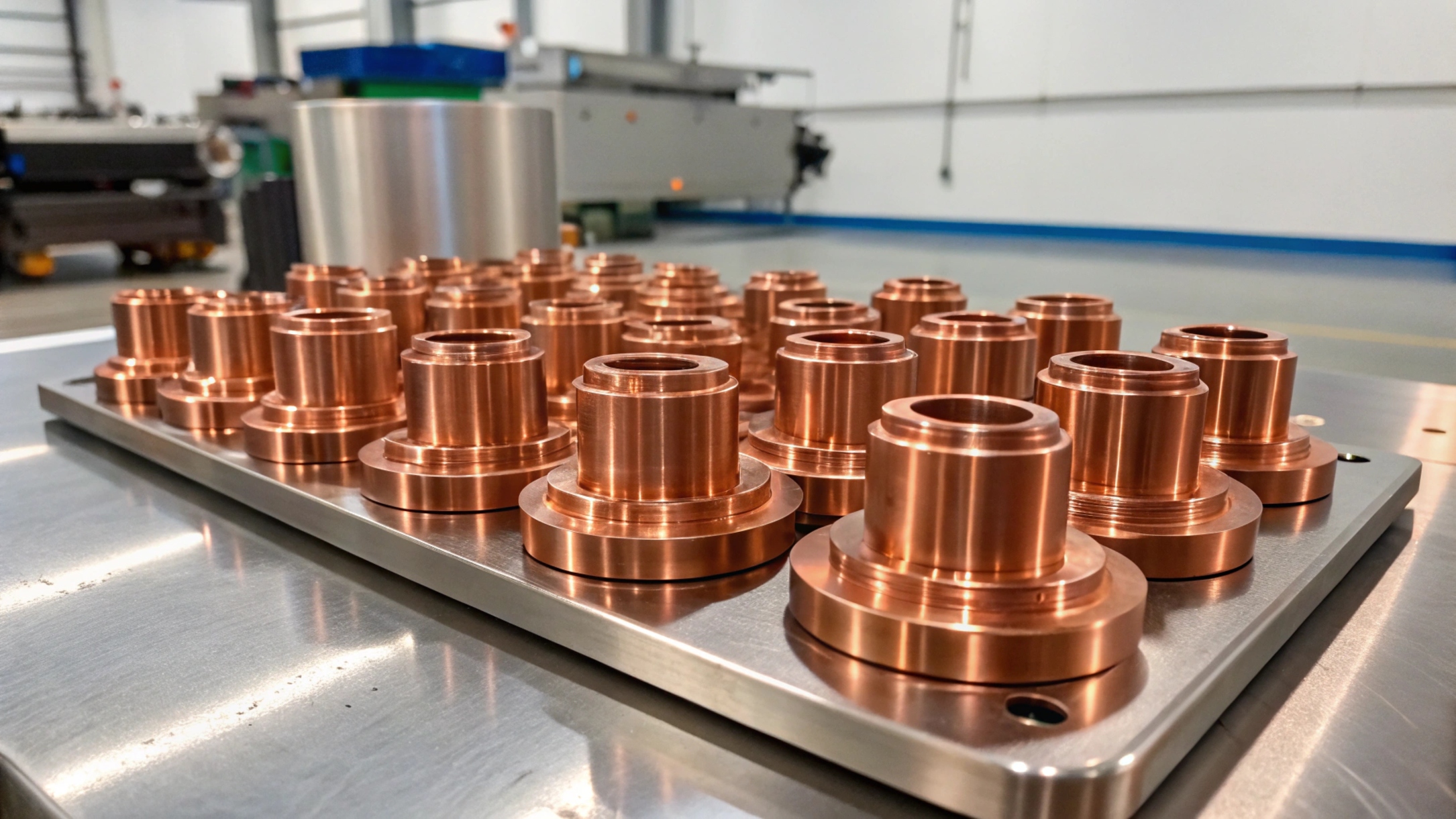
Dive-Deeper: Industry Use Cases That Demand Precision Copper Components
Each industry values copper for different reasons. Let’s look at where CNC machining6 really shines with this metal:
Electronics and Power Transfer
Due to excellent electrical properties, copper is used for:
- Busbars
- Connectors
- Terminals
- Heat sinks
- RF shielding housings
Medical Devices
Copper’s antimicrobial features make it ideal for:
- Surgical handles
- Dental tools
- Lab fixtures
- Antibacterial covers
Aerospace and Aviation
In high-temperature or vacuum environments, copper's stability is crucial. Applications include:
- Nozzle components
- Heat exchangers
- Avionics shielding
| Industry | Copper CNC Applications |
|---|---|
| Electrical | Connectors, terminals, busbars |
| Medical | Surgical instruments, housings |
| Aerospace | Heat shields, avionics components |
| Industrial | Hydraulic and cooling system parts |
Tips for Achieving High Precision and Surface Finish?
Need mirror finishes or tight tolerances on copper parts?
To improve copper part quality, control vibration, use finishing passes, and polish post-machining.
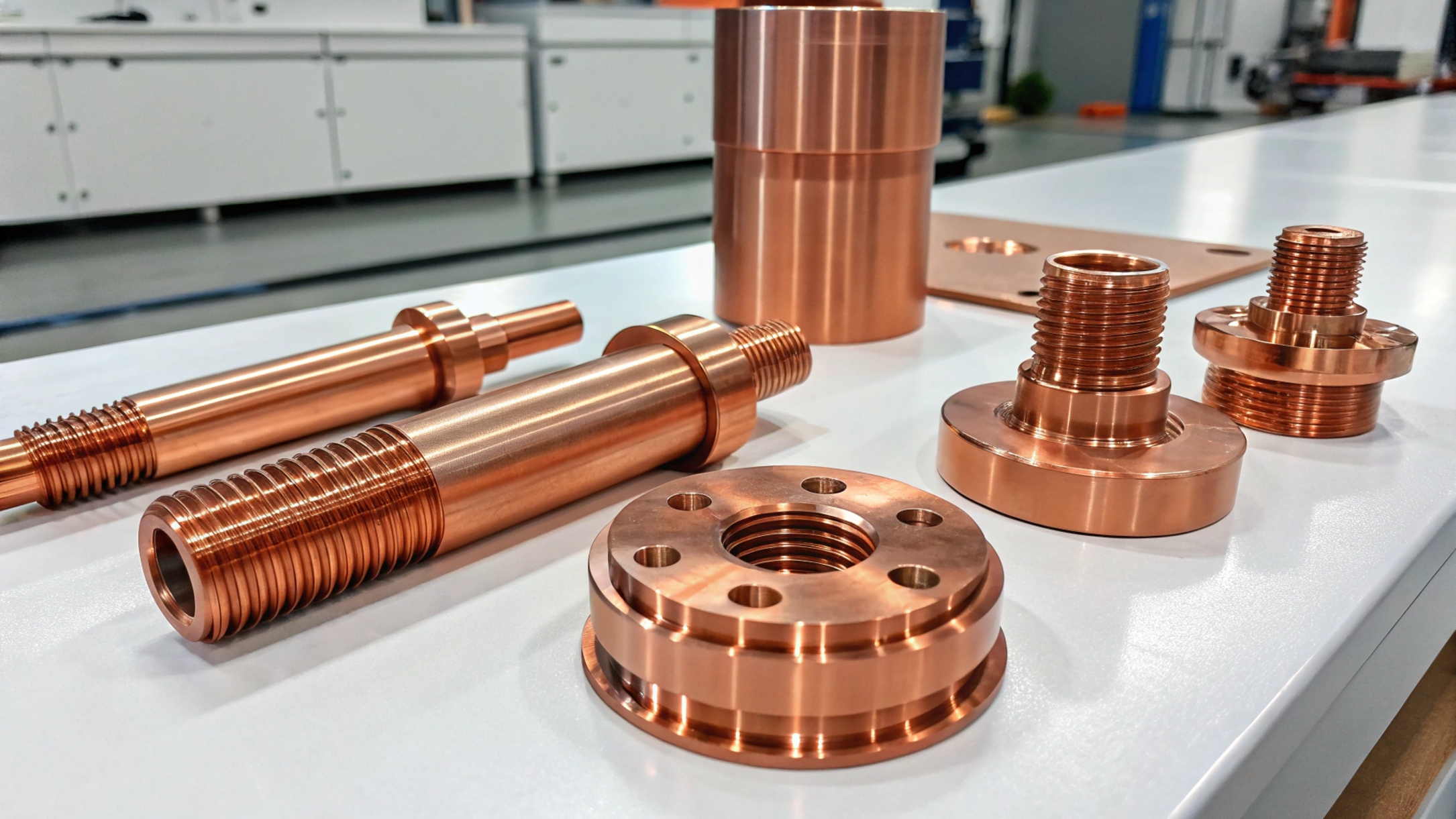
Dive-Deeper: How to Boost Part Accuracy and Finish in Real-World Jobs
Over the years, I’ve faced countless tight-tolerance copper jobs. Here's how I’ve handled them:
Final Finishing Passes
Always leave 0.1–0.2mm for a final pass. It removes tool deflection marks and gives a cleaner finish.
Minimize Vibration
Copper is soft but also resonates easily. Reduce chatter by:
- Short tool projection
- Using damped holders
- Adjusting spindle speed mid-cut (variable RPM)
Surface Treatments
Copper tarnishes over time. Consider these treatments post-machining:
| Finish Type | Benefit |
|---|---|
| Passivation | Slows oxidation |
| Nickel plating | Improves wear resistance |
| Electropolishing | Creates ultra-smooth surfaces |
Measurement Tools
Since copper is soft, contact-based probes may dent the surface. Use non-contact tools (optical or laser) for precise measurements without damage.
Conclusion
CNC machining copper requires extra care, but rewards with precision, conductivity, and broad applications across industries.
-
Understanding high conductivity can enhance your knowledge of material selection in engineering and electronics. ↩
-
Exploring corrosion resistance will help you appreciate the longevity and durability of materials in various environments. ↩
-
Learning about antimicrobial properties can inform you about health benefits and applications in medical settings. ↩
-
Discover the ideal cutting parameters for copper to enhance your machining efficiency and product quality. ↩
-
Explore this resource to learn effective techniques and tips for machining copper, ensuring better precision and reduced tool wear. ↩
-
Explore how CNC machining enhances precision and efficiency in copper part production, crucial for various industries. ↩

